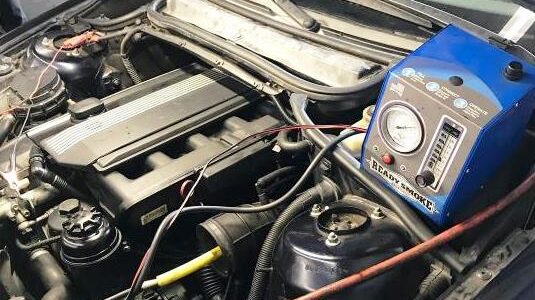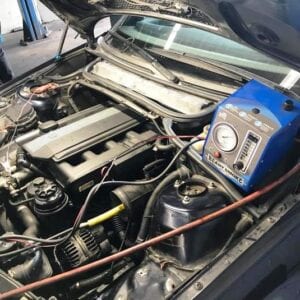
In the realm of automotive maintenance, emissions repair stands out as a critical aspect, intimately tied to environmental responsibility and vehicle performance. Whether prompted by regulatory requirements or a desire to reduce one’s carbon footprint, understanding the options available for emissions repair is paramount. From addressing issues with catalytic converters to troubleshooting faulty oxygen sensors, the landscape of emissions repair encompasses various components and processes. In this guide, we delve into the intricacies of emissions repair, exploring not only the technical aspects but also the environmental impact and economic considerations. By equipping oneself with knowledge about emissions repair options, individuals can navigate this aspect of vehicle maintenance with confidence and conscientiousness.
Understanding Emissions Standards
Navigating the labyrinth of emissions regulations is crucial for vehicle owners and technicians alike. These standards, set by governmental bodies, dictate the acceptable levels of pollutants that vehicles can emit into the atmosphere. Understanding these regulations is fundamental as they directly influence the available repair options. Compliance with these standards ensures not only legal adherence but also contributes to environmental protection. Moreover, familiarity with emissions standards empowers consumers to make informed decisions regarding their vehicle’s maintenance and repair, aligning with their environmental values and legal obligations.
Diagnostic Tools and Techniques
As vehicles become more technologically advanced, so do the tools and techniques for diagnosing emissions-related issues. From traditional methods like visual inspections and exhaust gas analysis to cutting-edge diagnostic scanners and onboard computer systems, the arsenal available to technicians is vast. These tools enable precise identification of faults in emission control systems, facilitating efficient and effective repairs. Moreover, advancements in diagnostic technology not only streamline the repair process but also enhance accuracy, minimizing guesswork and reducing repair costs for vehicle owners.
Component Analysis: From Catalytic Converters to Oxygen Sensors

Understanding the intricacies of vehicle emissions control systems requires a detailed analysis of critical components, from catalytic converters to oxygen sensors. These components play a crucial role in reducing harmful emissions and optimizing engine performance. Catalytic converters, for instance, undergo chemical reactions to convert pollutants into less harmful substances. Meanwhile, oxygen sensors monitor exhaust gases to ensure the engine maintains an optimal air-fuel mixture. By analyzing these components, technicians can diagnose and address emissions issues effectively, promoting both environmental responsibility and vehicle efficiency.
- Catalytic Converters: Chemical catalysts that convert harmful emissions into less harmful substances.
- Oxygen Sensors: Monitor exhaust gases to ensure the engine maintains an optimal air-fuel mixture.
- EGR Valves: Regulate the flow of exhaust gas to reduce nitrogen oxide emissions.
- Evaporative Emission Control Systems (EVAP): Prevent the release of fuel vapors into the atmosphere.
- PCV Valves: Control the flow of gases between the crankcase and intake manifold to reduce emissions and maintain engine performance.
A comprehensive understanding of emissions control components, from catalytic converters to oxygen sensors, is essential for effective emissions repair and maintenance. By analyzing these components and their functions, technicians can identify and address emissions-related issues, promoting vehicle efficiency and environmental stewardship.
Repair vs. Replacement: Weighing the Pros and Cons
When faced with a faulty emissions component, one of the primary decisions is whether to repair or replace it. This choice involves considering various factors, including cost, effectiveness, and environmental impact. Repairing a component may be a more economical option in some cases, especially if the issue is minor or localized. However, replacement might be necessary for severely damaged or outdated parts, ensuring long-term reliability and compliance with emissions standards. Balancing these pros and cons is essential for making informed decisions that align with both financial constraints and environmental responsibility.
Emissions Repair Services: Finding the Right Expertise
When it comes to emissions repair services, finding the right expertise is paramount for ensuring effective and reliable solutions for your vehicle. Entrusting your emissions-related issues to skilled professionals can make all the difference in resolving problems promptly and maintaining compliance with environmental regulations. Here are five key factors to consider when seeking emissions repair services:
- Reputation: Research local repair shops and seek recommendations from friends or family to find reputable professionals with a proven track record of quality service.
- Specialization: Look for mechanics or services that specialize in emissions repair, as they will likely have the expertise and experience needed to tackle complex emissions-related issues.
- Certifications: Verify that the chosen professionals hold relevant certifications and qualifications, ensuring adherence to industry standards and best practices in emissions repair.
- Diagnostic Capabilities: Ensure that the repair service has access to advanced diagnostic tools and techniques to accurately pinpoint emissions-related faults and streamline the repair process.
- Customer Reviews: Read reviews and testimonials from previous customers to gauge the level of satisfaction with the repair service and the overall experience.
Selecting the right emissions repair service involves thorough research and consideration of various factors such as reputation, specialization, certifications, diagnostic capabilities, and customer feedback. By choosing a reputable and experienced professional, you can rest assured that your vehicle’s emissions issues will be addressed effectively and efficiently, keeping your car running smoothly while minimizing its environmental impact.
Aftermarket Solutions and Upgrades
For vehicle owners looking to enhance emissions performance beyond factory specifications, aftermarket solutions and upgrades offer a range of possibilities. These products, ranging from high-flow catalytic converters to performance-oriented oxygen sensors, are designed to improve efficiency and reduce emissions output. While some upgrades focus solely on enhancing performance, many aftermarket solutions prioritize environmental friendliness and compliance with emissions regulations. Exploring these options allows vehicle owners to tailor their emissions control systems to their specific needs and preferences while maintaining a commitment to environmental stewardship.
Environmental Impact: Making Informed Choice
In today’s world, every decision we make has a ripple effect on the environment, and when it comes to emissions repair, being mindful of the environmental impact is crucial. Making informed choices regarding emissions repair not only ensures the health of your vehicle but also contributes to the well-being of our planet. Here are some key considerations and actions to take:
- Opt for eco-friendly repair techniques: Choose repair methods that minimize harm to the environment, such as using sustainable materials and processes.
- Source components responsibly: Look for replacement parts that are recycled or made from environmentally friendly materials to reduce your carbon footprint.
- Dispose of old components properly: Recycle or dispose of old emissions components in a responsible manner to prevent further environmental damage.
- Consider long-term sustainability: Prioritize repair options that promote long-term sustainability and reduce the need for frequent replacements or repairs.
- Advocate for change: Support policies and initiatives that promote emissions reduction and environmental protection on a larger scale.
Making informed choices about emissions repair empowers us to minimize our impact on the environment and contribute to a greener future for generations to come.
Conclusion
Understanding emissions standards and embracing informed emissions repair choices are pivotal steps towards environmental stewardship in the automotive realm. By delving into diagnostic tools, component analysis, and the delicate balance between repair and replacement, individuals can navigate emissions repair with confidence and conscientiousness. To ensure effective and eco-friendly emissions repair services, it’s imperative to seek out reputable professionals with expertise in the field. For those in Plainfield, Illinois, Last Chance Auto Repair for Cars Trucks stands as a beacon of reliability and excellence in emissions repair. Contact them at 12052 S Naper Plainfield Rd, or call 815-577-0327 to take the first step towards ensuring your vehicle’s compliance with emissions standards while contributing to a cleaner environment. Choose informed emissions repair today and drive towards a greener tomorrow.

